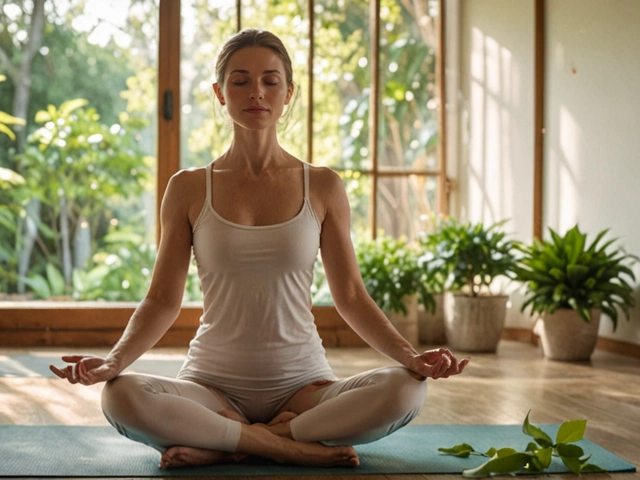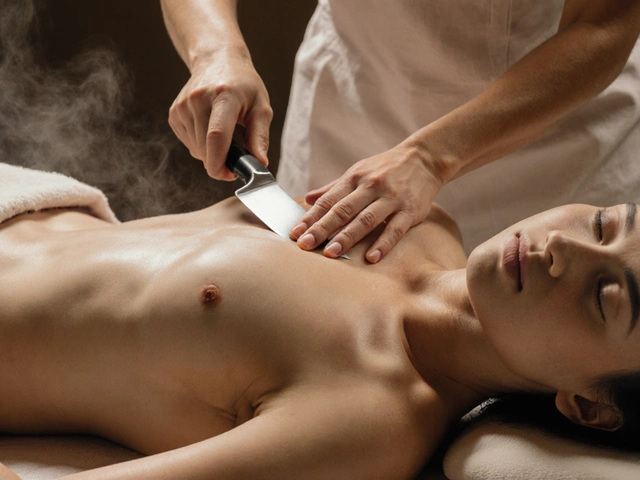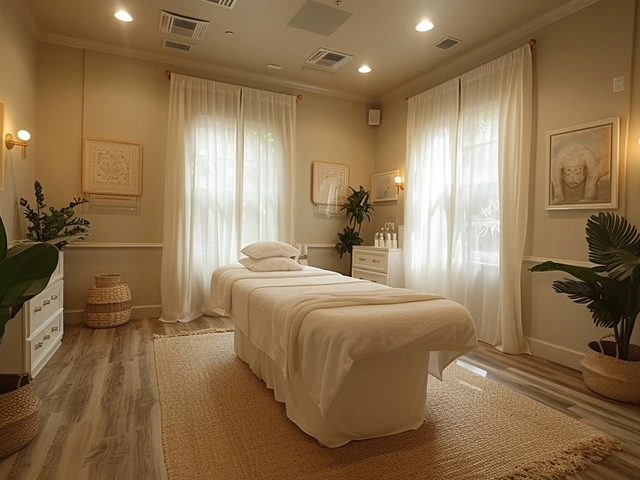Mastering Aromatherapy: A Step‑by‑Step Guide for Safe, Effective Essential Oil Blends
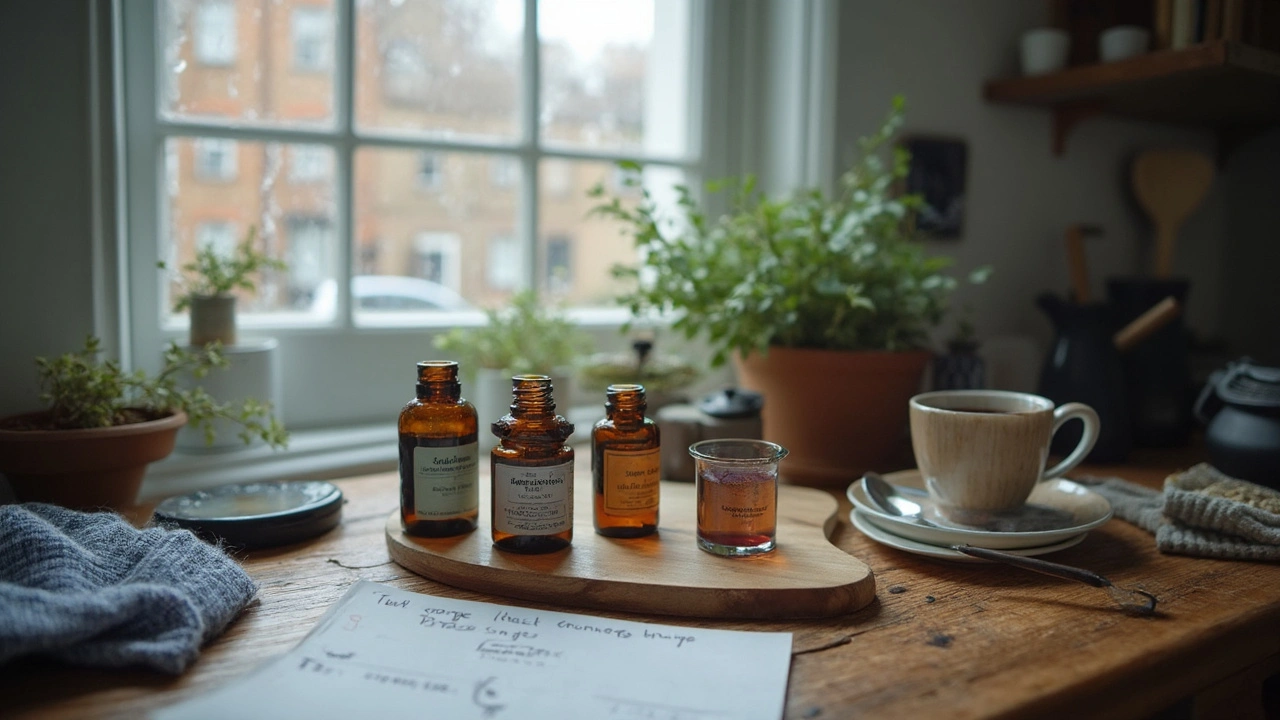
You’re here because you want results, not a perfume cloud. Aromatherapy can calm a wired brain, help you focus before a big meeting, or make bedtime less of a battle-but only if you use it with intention and respect the safety guardrails. I’ll walk you through a simple method I use at home in Melbourne: set a goal, pick the right delivery method, blend safely, test, and keep what works. No guesswork, no hype.
TL;DR
- Pick one clear outcome (sleep, stress relief, focus, easier breathing) and match the method: diffusion or inhalation for mood; topical for localized issues.
- Use safe dilutions: adults 1-3% for routine topical use; kids and pregnancy 0.25-1%. Avoid undiluted skin application.
- Choose oils with evidence: lavender for sleep/anxiety; peppermint for tension headaches; eucalyptus for nasal stuffiness.
- Blend small, record drops, test for 3-7 days, then tweak. Quality beats quantity; 2-4 oils per blend is plenty.
- Store tightly sealed, away from heat and light. Citrus oils oxidize fast-use within a year.
The step‑by‑step method (from goal to safe results)
I keep this process tight because it works. It also avoids the two biggest mistakes I see: overusing oils and chasing complicated recipes.
-
Define one clear outcome. What do you want right now? Examples:
- Sleep: fall asleep faster, fewer wake-ups.
- Stress relief: less mental chatter before a presentation.
- Focus: deep work without drifting to your phone.
- Breathing support: ease stuffy nose during cold season.
Write it down. If you chase three goals at once, you won’t know what worked.
-
Match the method to the goal. Use this quick rule of thumb:
- Mood and sleep → Diffusion (30-60 minutes on, then off) or a personal inhaler.
- Localized discomfort (e.g., tension in temples, sore calves) → Topical with carrier oil at the right dilution.
- Breathing → Steam inhalation (cautious), inhaler, or light diffusion.
- Baths → Only when oils are properly dispersed; never drop neat oils into water.
Diffusion is the lowest-friction starting point: fast, flexible, and easy to stop if it’s too strong.
-
Safety first-no exceptions.
- Skip internal use unless directed by a qualified clinician. It’s not a DIY move.
- Pregnancy: stick to 0.5-1% topical dilution and aromasticks/diffusion; avoid high-risk oils (e.g., wormwood, pennyroyal, cade). Ask a qualified aromatherapist if in doubt.
- Babies/kids: very low dilutions (0.25-1%) and limited diffusion. Avoid strong menthol/cineole oils (e.g., peppermint, eucalyptus) for infants.
- Photosensitivity: cold‑pressed bergamot, lime, and some lemons can increase sunburn risk. Use bergapten-free (FCF) bergamot for skin or avoid sun/solarium for 12-18 hours after use.
- Pets: ensure ventilation; never apply oils to pets without a vet. Cats are especially sensitive; tea tree and citrus can be problematic.
- Asthma/migraines: start with low diffusion or a personal inhaler to control dose. Stop if symptoms spike.
Authoritative references: Tisserand & Young, Essential Oil Safety (2nd ed.); research summaries from NCCIH (updated 2024). These lay the safety groundwork most hobby guides skip.
-
Select oils with evidence behind the claim. A few examples you can trust:
- Sleep/anxiety: Lavender (Lavandula angustifolia) shows consistent benefit for mild anxiety and sleep onset in randomized trials.
- Tension headache: Peppermint (Mentha x piperita) 10% in ethanol applied to temples reduced headache intensity in clinical studies.
- Nasal stuffiness: Eucalyptus (E. radiata or E. globulus) may improve subjective airflow via cooling receptors, helpful during colds.
- Focus/alertness: Rosemary (chemotype 1,8‑cineole) and peppermint can boost alertness in small human studies.
- Skin cleansing (non‑open skin): Tea tree (Melaleuca alternifolia) shows antimicrobial activity; keep to low dilutions to avoid irritation.
Look for Latin names and chemotypes on the label. “Therapeutic grade” is marketing fluff; ask for GC/MS reports or buy from sellers who publish them.
-
Calculate the right dilution. Here’s the math you’ll use every week: Dilution % = (Total drops of essential oil ÷ Total mL of carrier × 20) × 100. A simple rule: ~20 drops ≈ 1 mL, but drop size varies by oil and orifice. Weighing by grams is best if you have a scale.
Target use Dilution % Drops per 10 mL carrier Drops per 30 mL (1 oz) Notes Infants (6-24 months) 0.25-0.5% 1-3 3-9 Use sparingly; avoid face/neck with menthol/cineole oils Kids (2-6 years) 0.5-1% 3-6 9-18 Short-term use; patch check is not a guarantee against sensitization Adults daily (body) 1-2% 6-12 18-36 Good for general massage or skincare Adults targeted (short-term) 3-5% 18-30 54-100 Localized areas only (e.g., calves, temples) Spot treatments (very short-term) 5-10% 30-60 100-200 Use cautiously; avoid damaged skin Carriers: fractionated coconut, jojoba, sweet almond, grapeseed, or Australian macadamia (a lovely, stable option in our climate).
-
Blend with a simple structure. Keep it to 2-4 oils. Try a balance of top (bright), middle (heart), and base (grounding) notes. Example ratio by drops: 2 top : 3 middle : 1 base. Start small: 10 mL carrier + 6-8 total drops for a 1-1.5% blend.
Write the date, oils, drops, and your goal on the label. When a blend works, you’ll want to recreate it exactly.
-
Test and adjust. Try the blend for 3-7 days. If you get a headache or feel “nose blind,” reduce drops or diffuse less often (I run 30 minutes on, 30 off). If skin feels warm or itchy, stop and re‑dilute to half strength.
-
Store and care. Keep oils in dark glass, tightly closed, away from heat. Citrus oils go off fastest-refrigerate to extend life. Mark the open date; if it smells sharp/paint‑like, it’s oxidized-do not use on skin.
Evidence snapshot: A 2019 systematic review in Complementary Therapies in Medicine reported small-to-moderate anxiety reductions with inhaled lavender and citrus oils. Randomized studies show peppermint oil helps tension‑type headaches topically. Aromatherapy isn’t a cure‑all, but for mood and mild discomforts, it’s a fair tool-when used correctly.
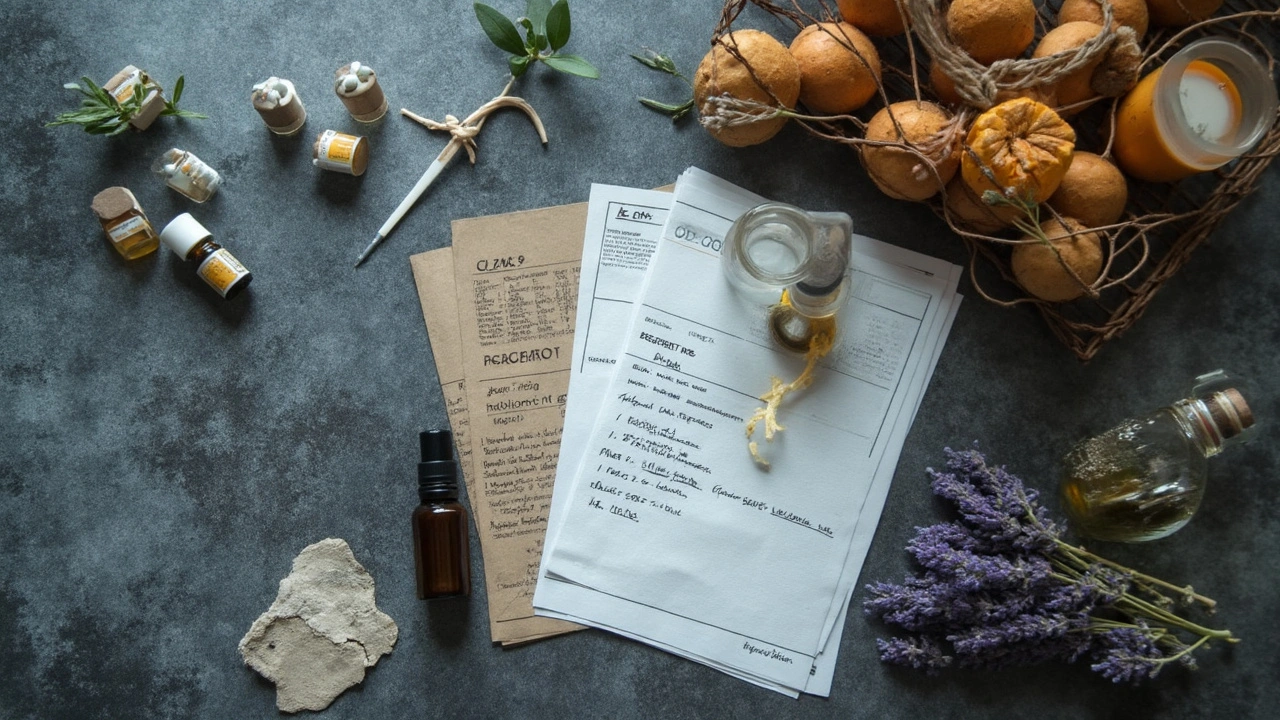
Recipes, tools, and checklists you’ll actually use
These are real‑world formulas I reach for. Adjust to taste within safe ranges.
1) Sleep wind‑down diffuser blend (evening)
- Lavender (Lavandula angustifolia) - 3 drops
- Sweet orange (Citrus sinensis) - 2 drops
- Cedarwood (Cedrus atlantica) - 1 drop
Run 30-45 minutes while you read. If mornings feel groggy, cut cedarwood.
2) Focus roller (daytime, wrists/back of neck)
- Peppermint (Mentha x piperita) - 8 drops
- Rosemary ct. cineole (Rosmarinus officinalis) - 6 drops
- Sweet basil linalool (Ocimum basilicum) - 4 drops
- Jojoba carrier to 10 mL (≈ 1.8%)
Apply lightly before deep work. Avoid eyes. If you’re sensitive to menthol, halve the peppermint.
3) Gentle mood lift (personal inhaler)
- Bergamot FCF (Citrus bergamia, bergapten‑free) - 7 drops
- Lavender - 5 drops
- Frankincense (Boswellia carterii) - 3 drops
Add to an aromastick wick. Inhale 2-3 times when stress spikes.
4) Easy-breath steam (not for kids)
- Eucalyptus radiata - 1 drop
- Tea tree - 1 drop
Add to a bowl of warm (not boiling) water. Towel over head, breathe for 3-5 minutes. Stop if you feel dizzy. Asthma? Skip steam; use a light diffusion instead.
5) Post‑run calf rub (short‑term, localized)
- Lavender - 6 drops
- Black pepper (Piper nigrum) - 4 drops
- Sweet marjoram (Origanum majorana) - 6 drops
- Grapeseed oil to 30 mL (≈ 1.3%)
Massage into calves after a shower. If skin feels warm, reduce black pepper.
6) Bath blend (skin‑friendly method)
- Roman chamomile (Chamaemelum nobile) - 4 drops
- Lavender - 6 drops
- Solubilizer (e.g., polysorbate 20) 1:1 to 1:2 with the essential oils
Mix oils with solubilizer first; then add to a full tub and swish. Oils floating on water can irritate skin-don’t skip the solubilizer. Using only carrier oil will still leave droplets on the surface.
Quality & buying checklist (print this and take it shopping):
- Latin name and chemotype listed (e.g., Lavandula angustifolia, ct. linalool).
- Plant part and country of origin (e.g., flower, Australia/France).
- Batch number and (ideally) GC/MS available.
- Dark glass bottle, tight cap; no plastic droppers for long-term storage.
- No grand cure claims. “Therapeutic grade” = marketing, not a standard.
Daily safety checklist (takes 30 seconds):
- Ventilation on. Diffuser timer set (30-60 min).
- Kids/pets not trapped in a closed room with a running diffuser.
- Fresh oils only; citrus opened >12 months? Relegate to cleaning blends (non‑skin).
- Skin intact before topical use; avoid broken or irritated areas.
Tools I actually use:
- Ultrasonic diffuser (simple, with timer). Nebulizing diffuser for big rooms or when I want stronger scent fast.
- 10 mL roller bottles (steel ball), 5 mL dropper bottles for test batches, personal inhalers.
- Carrier oils: jojoba (stable), fractionated coconut (light), macadamia (nourishing, very Aussie).
- Mini scale (0.01 g) for precise blending; otherwise count drops consistently.

FAQs, troubleshooting, and your next moves
Does aromatherapy actually work? For mood, stress, and sleep onset, the evidence is modest but real, especially with lavender and certain citrus oils via inhalation. For pain, results vary: peppermint helps tension headaches topically; deep musculoskeletal pain is trickier. Think of it as a helpful nudge, not a replacement for medical care.
What’s the best diffuser? Ultrasonic diffusers are affordable and fine for most rooms. Look for an auto‑off and interval timer. Nebulizers deliver a stronger aroma without water, good for large spaces, but can be intense-use short bursts.
Is ingesting essential oils safe? Not as a home experiment. Oral use belongs under trained clinical guidance because of mucosal irritation, drug interactions, and dose control. You’ll do great with inhalation and topical methods.
Can I use oils on kids? Yes, with care. Diffuse lightly, keep rooms ventilated, and use very low topical dilutions (0.25-1%). Avoid peppermint/eucalyptus for infants. Stick with gentle oils like lavender, chamomile, or sweet orange.
Pregnancy guidelines? Diffusion and aromasticks are generally fine. For skin, 0.5-1% blends after the first trimester. Avoid risky oils (wormwood, pennyroyal, tansy, camphor). If you’re unsure, get advice from a qualified aromatherapist.
Are citrus oils always phototoxic? Not always. Cold‑pressed bergamot, lime, and some lemon are phototoxic. Steam‑distilled versions and bergamot FCF (bergapten‑free) are safer for skin. When in doubt, keep treated skin out of direct sun for 12-18 hours.
What about pets? Ventilate, keep doors open, and give them the option to leave. Don’t apply oils to pets. Cats and birds are especially sensitive. If a pet sneezes, drools, or seems agitated, stop diffusion.
Patch testing? Traditional patch tests can themselves trigger sensitization with neat oils. Better: start with conservative dilutions on a small area for a few days and watch for redness or itching.
How long do oils last? Rough shelf‑life (sealed, cool, dark): citrus 1 year, conifers 1-2 years, most others 3-5 years, resins (frankincense/myrrh) often longer. Oxidized oils are higher risk for skin reactions-use them only for cleaning, not the body.
Why do I stop smelling a scent? Olfactory fatigue. Take breaks. Switch blends. Diffuse intermittently. An inhaler helps you control exposure.
Troubleshooting
- Headache/nausea during diffusion: Too strong or wrong oil. Cut the drops by half or switch to calmer oils (lavender, chamomile, cedarwood). Ensure fresh air.
- Skin redness/itch: Stop immediately. Wash with carrier oil, not water. Re‑blend at half the dilution next time or swap the hottest oil (e.g., cinnamon, clove, black pepper).
- No effect: Check your goal-method match, increase slightly within safe limits, or choose a different oil family (e.g., swap sweet orange for bergamot FCF).
- Gunky diffuser: Empty, wipe, run with warm water + a splash of white vinegar for 5-10 minutes (if your model allows), rinse, air dry. Clean weekly.
- Breakouts after facial blend: Reduce dilution to 0.5-1%, change carrier (try jojoba), and avoid comedogenic oils on your face.
Next steps (your simple plan)
- Build a tight starter set (10 oils): Lavender, sweet orange, bergamot FCF, frankincense, cedarwood, peppermint, rosemary ct. cineole, tea tree, eucalyptus radiata, Roman chamomile.
- Master your dilutions: Print the chart above. Tape it inside your cabinet. After two weeks, you’ll know it by heart.
- Keep a blend journal: Date, goal, oils, drops, method, results (1-10). After a month, you’ll have 3-5 go‑to formulas that actually work for you.
- Storage routine: Label open dates. Citrus bottles in the fridge. Everything else cool, dark, and tightly capped. In Melbourne’s summer, don’t leave oils in a hot bathroom.
- Learn from pros: Safety data from Tisserand & Young (2nd ed.) and consumer overviews from NCCIH (2024 update) are worth the read.
If you want one takeaway from this aromatherapy guide, it’s this: pick a single outcome, use the right method, dose conservatively, and track results. Do that, and the small bottles will finally start earning their shelf space.

